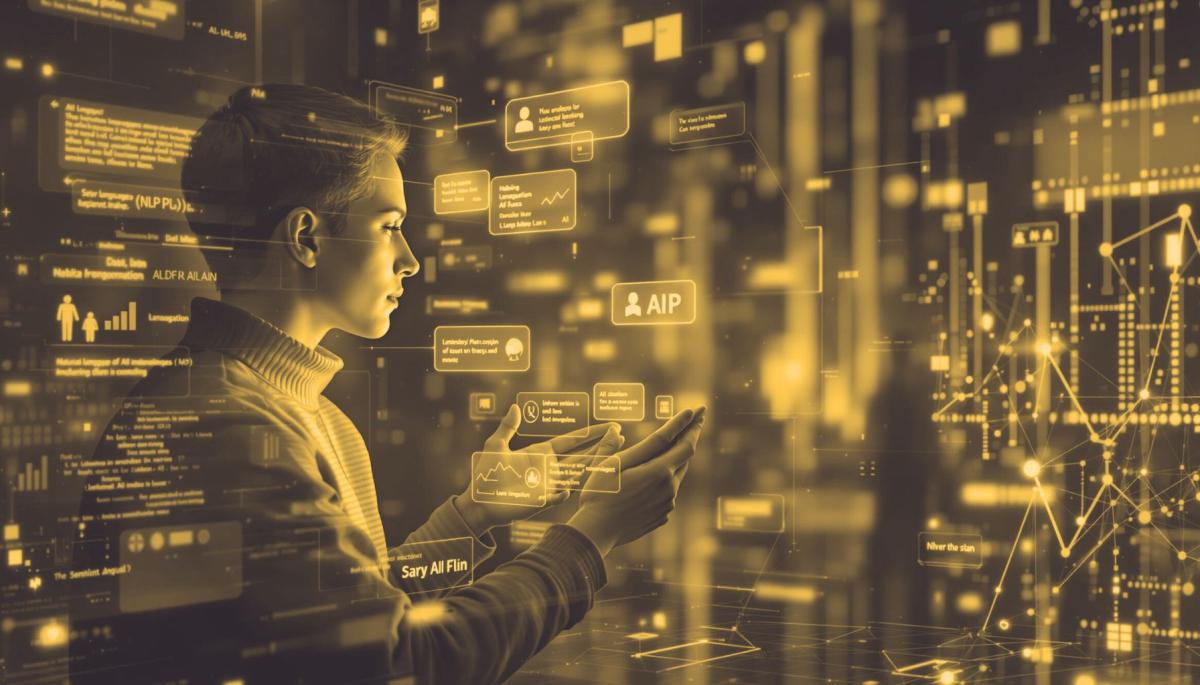We will guide you through the basic concepts of AI, from machine learning to neural networks and natural language processing. You'll learn how to start practicing AI, which tools to use, and how to keep up with this fast-evolving field.

Artificial intelligence has long surpassed the boundaries of science fiction stories. That's why not only experts are sounding the alarm and predicting a bright future only for those who learn to master AI and keep up with it. That's why we've written a short guide for you, which will teach you the basics of artificial intelligence and advise you on how to learn to master it.
Why should you start now?
We live in an era where everyone can learn to master artificial intelligence. What was once the privilege of elite technological universities and research labs is now accessible to anyone with interest and determination to learn. Online courses, bootcamps, and interactive learning platforms are emerging, making AI education available to the general public.
The job market is hungry for AI specialists across all industries. From healthcare to the financial sector—new positions requiring knowledge of AI technologies are popping up everywhere. Even with the basics of AI, you can achieve a higher salary or more flexible working conditions, such as a home office. Moreover, you can start creating your own AI applications.
Key AI Concepts: From Basics to Advanced Technologies
As you dive deeper into the world of artificial intelligence, you'll find that it consists of various technologies and approaches. We will go through the most important ones below and try to create a comprehensive picture of what current AI offers.
Machine Learning
Machine learning represents the cornerstone of modern AI. Unlike traditional programming, where we explicitly define every step a computer should take, machine learning allows systems to learn from data.
It's like teaching a child to recognize animals—we don't tell them the exact list of characteristics of each species, but we show them many examples until they develop their own recognition abilities. Based on the way of learning, it is divided into supervised and unsupervised learning.
Supervised Learning
In supervised learning, the most common form of machine learning, we provide the system with labeled data—such as thousands of images of dogs and cats with information about what is depicted on them.
The system gradually learns to recognize patterns and characteristics that differentiate a dog from a cat. This approach is used everywhere around us—from spam filters in email to predicting real estate prices.
Unsupervised Learning
Unsupervised learning, on the other hand, works with unlabeled data. Imagine you have a large group of customers and want to divide them into meaningful segments without knowing in advance what those segments will be.
The algorithm itself discovers natural patterns and structures in the data. This technology is used, for example, in marketing for personalizing offers or in fraud detection.

Deep Learning
An exceptional chapter is deep learning, which has revolutionized the field of AI. It uses complex neural networks inspired by the human brain. These networks consist of multiple layers of interconnected neurons that can solve extremely complex tasks together.
Thanks to deep learning, we have self-driving cars today, real-time working translators, and systems for disease diagnosis from X-ray images.
Natural Language Processing (NLP)
Natural language processing (NLP) is an AI area focused on interaction between computers and human language. The goal of NLP is to enable machines to understand, analyze, and generate text or spoken language as people use it. This technology includes various tasks such as machine translation, sentiment analysis, speech recognition, or text generation.
Computer Vision
Thanks to advances in convolutional neural networks, computers can "see" and interpret visual information similarly to humans. This opens opportunities in security systems, autonomous driving, or even medicine for analyzing diagnostic images.
Reinforcement Learning
We must not forget reinforcement learning, which significantly differs from previous approaches. Here, the AI agent learns by interacting with the environment, much like a child learning to play a video game—using trial and error, rewarded for correct actions and penalized for incorrect ones.
Practical Steps: From Theory to Reality
Theoretical knowledge is important, but real mastery comes with practice. Platforms like Coursera, edX, or Udacity offer structured courses from leading global universities and tech companies.
There's no need to jump into the hardest courses. Start with the absolute basics that will help you understand how AI and individual tools work. It may seem unnecessary at first glance, but trust that you will gain a huge competitive advantage this way.
-
Systematic Approach to Learning
Success lies in a systematic approach. Instead of randomly clicking through tutorials, create a study plan. Start with basic Python concepts, move on to data analysis libraries like Pandas and NumPy, until you reach machine learning frameworks.
Apply each concept you learn immediately to a small project. For example, after mastering the basics of Pandas, create a simple data analysis dashboard, or after getting acquainted with the Scikit-learn library, program a predictive model for real estate price prediction.
-
Building a Portfolio
Practical projects are your best portfolio. Start with simple but complete projects. For example, creating an image classifier to recognize different types of flowers might sound simple, but it will guide you through the entire process from data collection through preprocessing and model training to deployment in practice.
-
Using Cloud Tools
Google Colab has become an invaluable tool for AI beginners. It provides free access to powerful hardware including GPUs, essential for training more complex models.
You don't have to worry about complex local environment setup—just open a browser and start experimenting. Moreover, you can easily share your notebooks with others and learn from their feedback.

-
Participating in Data Competitions
Involvement in data competitions is a great way to learn to work with data practically and improve your skills in data science. For example, Kaggle is a popular platform offering a wide range of competitions and tasks focused on data analysis.
You can start with ‘Getting Started’ competitions designed for beginners. These competitions include detailed tutorials that guide you step by step through the entire process. At the same time, you can communicate with other participants who can help you.
Once you gain more experience, move to more challenging challenges. Kaggle also provides access to a wide library of datasets which you can use to train your models. Additionally, you will find notebooks, interactive environments where you can view and modify code written by other data scientists.
-
The Power of Community
Community plays a key role in learning AI. Reddit groups like r/machinelearning or r/learnmachinelearning are full of people on a similar journey. Stack Overflow is a good choice that will help you with technical issues. Specialized Discord servers can also help you.
-
Keeping Up with the Latest Trends
New breakthroughs and technologies in AI emerge every month. To keep up, it's important to build a system for tracking news. Focus on trusted sources such as the OpenAI, DeepMind, or Google AI Research blogs. Newsletters like Import AI or The Batch will also help you filter new events in the field.
-
Active Participation in the AI Community
If you want to stay in the loop, look for interesting webinars, meetups, and conferences.
Remember, in the era of AI, it's not a question of whether to get involved, but when and how. Those who start earlier will have an advantage. AI isn't just a tool—it's a new way of thinking and solving problems that will define the future of work and innovation.
What will 6G internet bring – lightning-fast connection, smart cities, and artificial intelligence in the network

Mobile networks of the sixth generation will push the boundaries of communication and data transmission. 6G internet will offer speeds in the order of terabits, minimal delay, and integration with artificial intelligence. In the article, we explain how this technology works, how it differs from 5G, what frequencies it uses, and why it is essential for smart cities and modern industry.
Wireless charging: What are its benefits, limitations, and where is it heading?

Wireless charging has evolved from a luxury feature to a standard part of most modern phones. Simply place your mobile on the pad, and energy begins to flow without searching for a cable and connector. We explain how wireless charging works, what it entails, and why Qi and Qi2 technologies have become the new standard of convenience.
What is Wi-Fi 7? What changes does it bring and when does it make sense to switch

Today's home Wi-Fi network is under increasing pressure. It has to handle video calls, online gaming, and dozens of smart devices. The new Wi-Fi 7 standard offers a solution that takes wireless connectivity to the next level. We'll explain what this standard means in practice and why it might be crucial for the future of home and business networks.
What is DNS? Everything you need to know about its functionality and setup

When you type a website address into the browser, the correct page loads in an instant. This is managed by the DNS system, without which the internet as we know it would not exist at all. In this article, you will learn what DNS is, how it works, what types of records it contains, and why it is important for both speed and security of the connection.
How does fiber optic internet work and what do you need for its installation?

Fast and stable connection is a basic necessity in every household today. The solution is fiber optic internet, which works differently than regular cables and offers greater reliability to users. We'll explain how this technology works in practice, what it entails to run a fiber optic cable to your home, and what equipment you’ll need to keep everything running smoothly.
Cloud gaming – the end of consoles in sight?

Cloud gaming allows you to play games from anywhere without the need for expensive hardware. In this article, you'll learn how game streaming works, what advantages and limitations it brings, and which services are leading the way today. And most importantly: can it really threaten traditional consoles?